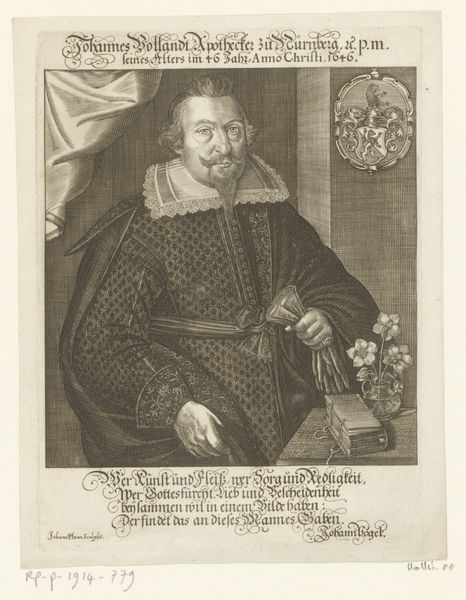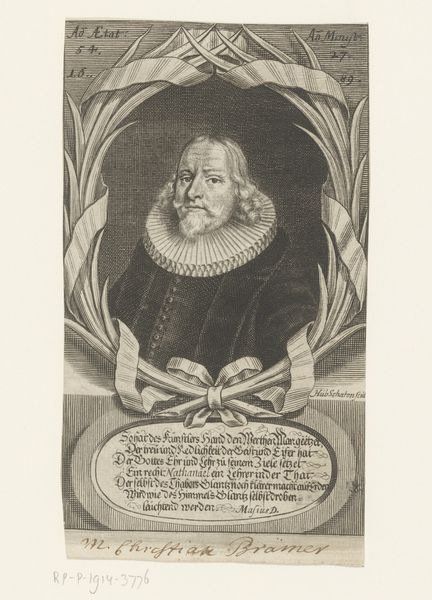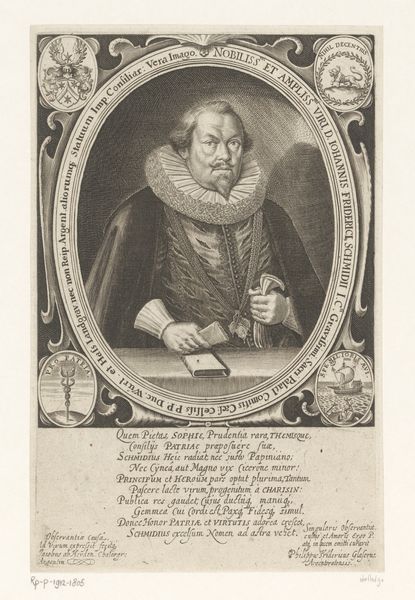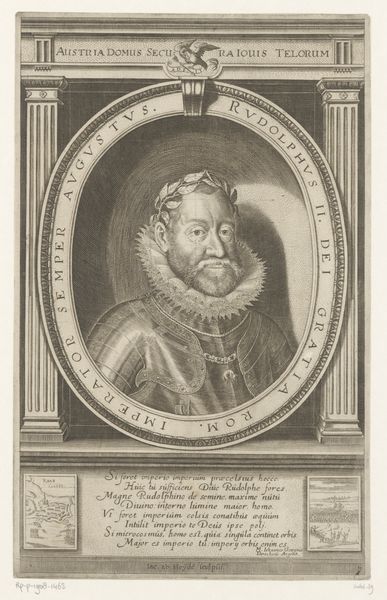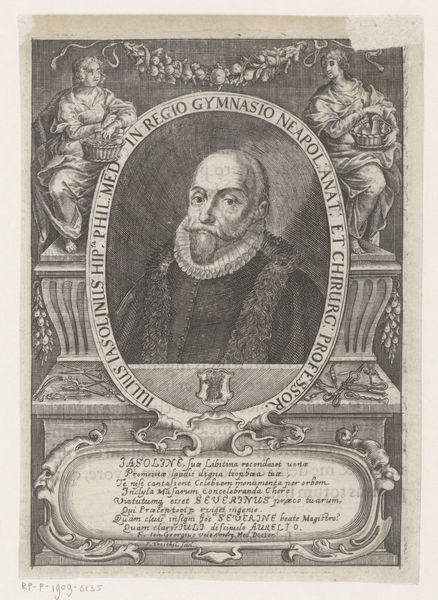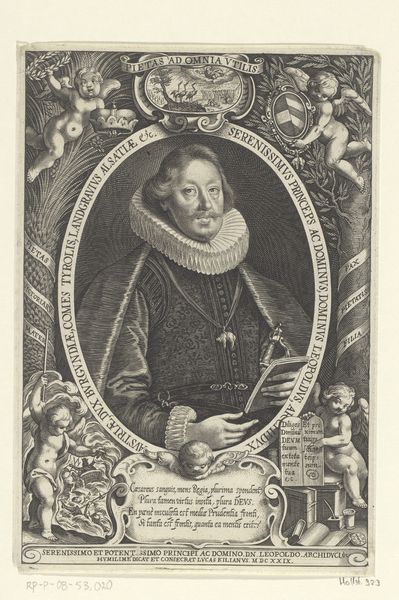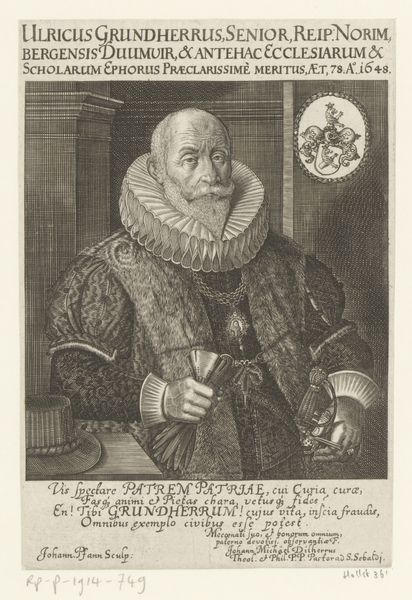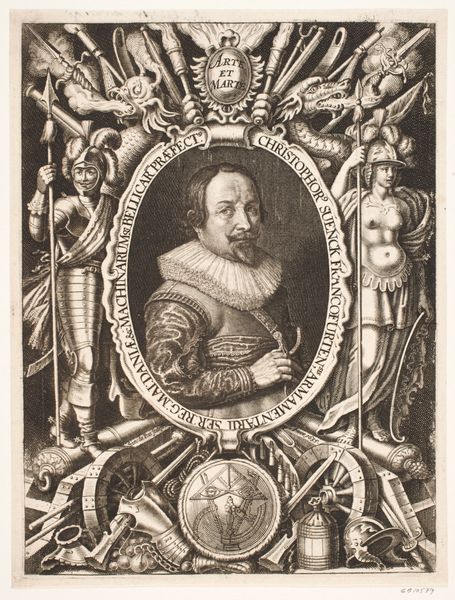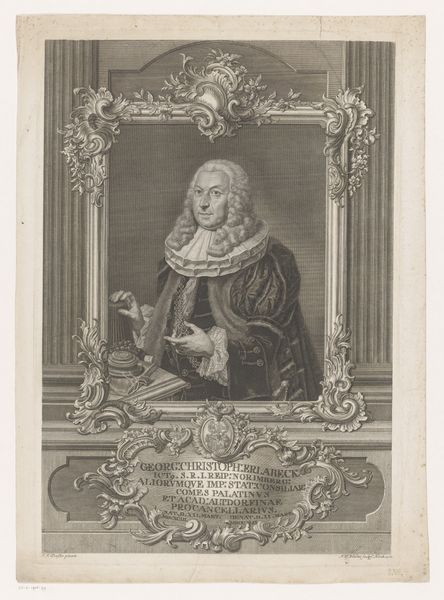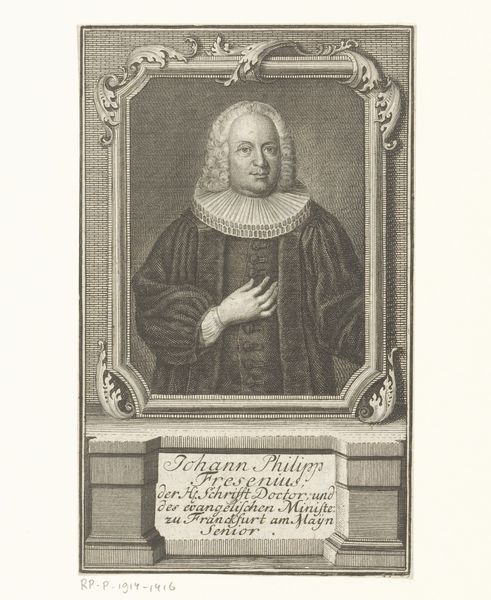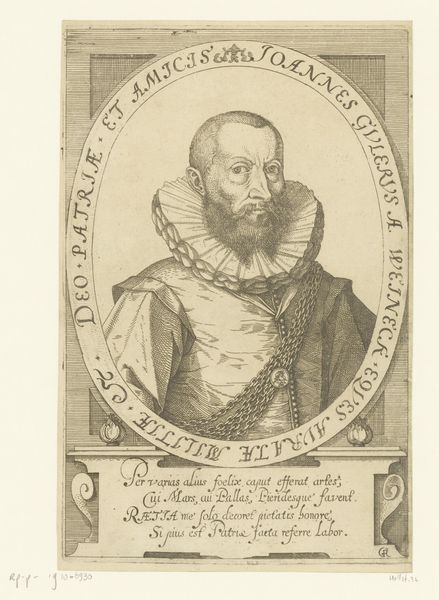
engraving
#
baroque
#
old engraving style
#
portrait drawing
#
history-painting
#
engraving
Dimensions: height 242 mm, width 172 mm
Copyright: Rijks Museum: Open Domain
Editor: Here we have "Portrait of Georg Imhof," an engraving from 1657, now residing in the Rijksmuseum. There's such detail in the man's fur-lined coat and the surrounding emblems – it feels almost overwhelming in its complexity. What do you make of it? Curator: It’s certainly a rich image, isn't it? As a historian, I immediately see this as a carefully constructed piece of political theatre. Think about the intended audience: Who was meant to view this image, and what message was it designed to convey about Imhof's power and status? Editor: So, it's not just a portrait, but a statement? Curator: Precisely! The intricate border, filled with crests and Latin inscriptions, elevates it beyond a simple likeness. These elements signal Imhof's connections to important institutions and lineage. He isn't simply being represented; he's being *publicly defined*. Consider also how the inclusion of a religious scene within the portrait’s architecture interacts with the display of family heraldry – where do we see a potential point of tension or harmony in that juxtaposition? Editor: I hadn't thought of it that way! The crests seemed more decorative than purposeful, and the religious scene as standard for the time period.. Curator: Consider then how social and political climates impact public imagery and self-representation. Looking at Imhof's expression, stern yet controlled, tells us about ideal behaviors and societal expectation, and how people communicated power through the images. Editor: It’s amazing how much more there is to unpack when you consider the historical context. I’ll never look at a portrait the same way again! Curator: Indeed. And that is the power and purpose of Art History, to see and interpret images not simply for what they depict but what they *do* culturally.
Comments
No comments
Be the first to comment and join the conversation on the ultimate creative platform.
